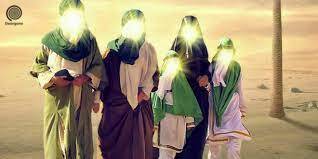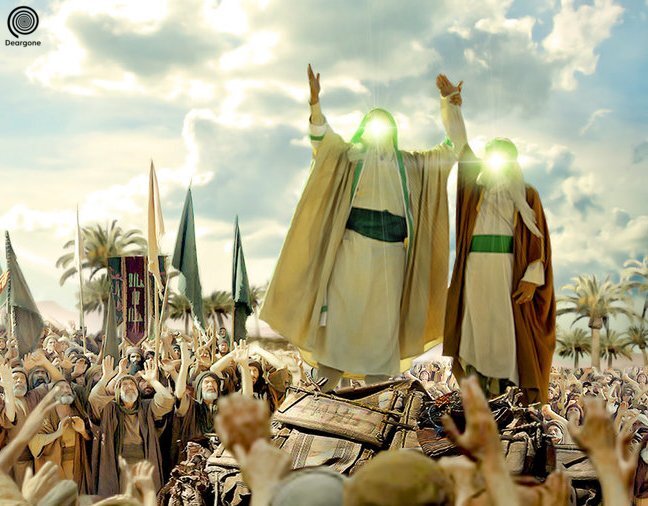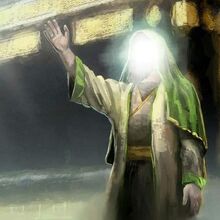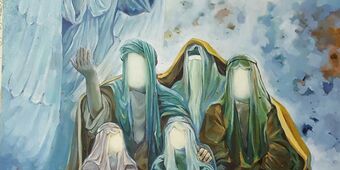Who are the Ahl al-Bayt of Prophet Muhammad?
The term "Ahl al-Bayt" refers to the family of the Prophet Muhammad, and they hold a prominent and revered position within Islamic tradition. This includes members of his immediate household, who are deeply respected and honoured by Muslims across the world. In this article, we will explore the key members, historical significance, and important events involving the Ahl al-Bayt.

Key Members of Ahl al-Bayt of Muhammar Rasool Allah
Ali ibn Abi Talib - Cousin and son-in-law of Prophet Muhammad, Ali was a pivotal figure in early Islamic history. He later became the fourth Caliph of the Muslim community.
Fatimah bint Muhammad - Daughter of the Prophet Muhammad and wife of Ali, Fatimah is venerated for her piety and devotion.
Hasan ibn Ali - The elder son of Ali and Fatimah, Hasan holds a significant place in Islamic history as the second Imam in Shia Islam.
Husayn ibn Ali - The younger son of Ali and Fatimah, Husayn is especially remembered for his martyrdom at the Battle of Karbala, a key event commemorated annually by Muslims.
In addition to these central figures, other wives of the Prophet Muhammad and various descendants are also considered part of the Ahl al-Bayt, depending on different Islamic traditions.
Historical Significance of the Ahl al-Bayt
The Ahl al-Bayt hold immense historical and spiritual significance within Islam. They are regarded as paragons of virtue and piety, serving as exemplary models for the Muslim community. Their lives and deeds are frequently cited in religious texts, and their legacy continues to influence Islamic thought and practice.
For the Shia branch of Islam, the Ahl al-Bayt have an even more pronounced role. They are seen as the rightful leaders of the Muslim community, with a divinely appointed status that sets them apart. This belief has shaped much of Shia theology and practice, making the Ahl al-Bayt central to their faith.

Key Events Involving the Ahl al-Bayt
Several key events and stories involving the Ahl al-Bayt have left an indelible mark on Islamic history:
The Life of Ali and Fatimah - Ali and Fatimah's marriage and life together are celebrated for their mutual love, respect, and devotion to Islam. Their home was a centre of learning and piety.
The Lives of Hasan and Husayn - The sons of Ali and Fatimah, Hasan and Husayn, faced significant challenges and played crucial roles in early Islamic history. Hasan’s short-lived caliphate and Husayn’s tragic martyrdom at Karbala are particularly noteworthy.
The Battle of Karbala - Occurring in 680 CE, this battle saw Husayn ibn Ali and his small group of followers facing the forces of Yazid I. Husayn’s martyrdom at Karbala is a defining moment in Islamic history, commemorated every year during Ashura by Shia Muslims.
These stories and events encapsulate the virtues and trials faced by the Ahl al-Bayt, cementing their place in the hearts and minds of Muslims worldwide.
Conclusion of article about Ahl-bayt
The Ahl al-Bayt of Prophet Muhammad are not only central figures in Islamic history but also enduring symbols of faith, sacrifice, and moral integrity. Their legacy continues to inspire and guide Muslims, reminding them of the enduring values of compassion, justice, and devotion to God.
If you seek to deepen your understanding of Islamic history and spirituality, exploring the lives and contributions of the Ahl al-Bayt is a profound and enlightening journey.
you can see this article: How many children did Muhammad the prophet of Islam have?
And this article: Prophet Muhammad's battles in Islam
And this article: Wives of Muhammad prophet of Islam
And this article: Who is the prophet of Islam








